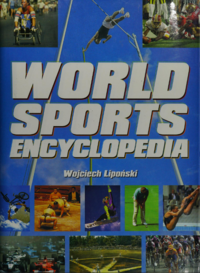Livro: World sports encyclopedia: diferenças entre revisões
Sem resumo de edição |
|||
| Linha 28: | Linha 28: | ||
« | « | ||
'''JOGO DO PAU'''. a Port, var of stick-fighting [Port. jogo - game, fun" + pau - stick]: considered the most typical of Portuguese folk sports: a kind of folk fencing practiced since the earliest times. The fight is conducted using long sticks whose length depends on the height of the players. A player stands holding the stick above his mouth. The sticks are made of wood without gnarls called lodão; the sticks were used by shepherds to drive away wild animals e.g. wolves and travelers used them for defense. Jogo do pau enjoyed enormous | '''JOGO DO PAU'''. a Port, var of stick-fighting [Port. jogo - game, fun" + pau - stick]: considered the most typical of Portuguese folk sports: a kind of folk fencing practiced since the earliest times. The fight is conducted using long sticks whose length depends on the height of the players. A player stands holding the stick above his mouth. The sticks are made of wood without gnarls called lodão; the sticks were used by shepherds to drive away wild animals e.g. wolves and travelers used them for defense. Jogo do pau enjoyed enormous | ||
popularity in the Minhos region of N-W Portugal and Tras-os-Montes in the NE of the country, later being introduced to Lisbon. Jogo do pau is a subject of a considerable body of literature in Portugal. The best hitherto is the work by F. Hopfer "O jogo do pau" (On the Stick Fight) discussing the history, basic techniques and jogo do pau training. The first set of rules defining the conduct of fight and exercises was compiled by J[[Mestre: José Maria da Silveira|.M. Saloio]], an instructor of many disciples. In Portugal there are 3 schools of jogo do pau: | popularity in the Minhos region of N-W Portugal and Tras-os-Montes in the NE of the country, later being introduced to Lisbon. Jogo do pau is a subject of a considerable body of literature in Portugal. The best hitherto is the work by [[Mestre: Frederico Hopffer|F. Hopfer]] "O jogo do pau" (On the Stick Fight) discussing the history, basic techniques and jogo do pau training. The first set of rules defining the conduct of fight and exercises was compiled by J[[Mestre: José Maria da Silveira|.M. Saloio]], an instructor of many disciples. In Portugal there are 3 schools of jogo do pau: | ||
1) the Galician school (escola galega) popular in the Minhos and Tras-os-Montes regions, which promotes the thrust technique with the stick held in one hand, where, before making the thrust, the fighter rotates the stick above his head; | 1) the Galician school (escola galega) popular in the Minhos and Tras-os-Montes regions, which promotes the thrust technique with the stick held in one hand, where, before making the thrust, the fighter rotates the stick above his head; | ||
Revisão das 15h58min de 20 de abril de 2023
Sobre
- Relevância: ★☆☆
- Título: World sports encyclopedia
- Autor: Wojciech Liponski
- Publicação: USA, St. Paul, MN : MBI, 2003
- Formato: 599 páginas (35cm)
Encyclopedia of traditional games é uma enciclopédia escrita em inglês de 2003, que descreve vários desportos mundiais, onde não podia faltar o Jogo do Pau.
Excerto da Obra
Versão original:
|
« JOGO DO PAU. a Port, var of stick-fighting [Port. jogo - game, fun" + pau - stick]: considered the most typical of Portuguese folk sports: a kind of folk fencing practiced since the earliest times. The fight is conducted using long sticks whose length depends on the height of the players. A player stands holding the stick above his mouth. The sticks are made of wood without gnarls called lodão; the sticks were used by shepherds to drive away wild animals e.g. wolves and travelers used them for defense. Jogo do pau enjoyed enormous popularity in the Minhos region of N-W Portugal and Tras-os-Montes in the NE of the country, later being introduced to Lisbon. Jogo do pau is a subject of a considerable body of literature in Portugal. The best hitherto is the work by F. Hopfer "O jogo do pau" (On the Stick Fight) discussing the history, basic techniques and jogo do pau training. The first set of rules defining the conduct of fight and exercises was compiled by J.M. Saloio, an instructor of many disciples. In Portugal there are 3 schools of jogo do pau: 1) the Galician school (escola galega) popular in the Minhos and Tras-os-Montes regions, which promotes the thrust technique with the stick held in one hand, where, before making the thrust, the fighter rotates the stick above his head; 2) the Ribatejo school (escola ribatejana), also known as the pateleira school (escola de pateleira), characterized by short and accurate blows at close range and parrying the altacking opponent: and 3) the Lisbon school (escola de Lisboa), a defensive school with most sports features consisting of parrying the opponent's blows with similar blows but in reverse direction. M. da Graca Sousa Guedes, Jogo do pau. JTP. 1979.» |
Ler o livro
Pode ler toda a obra directamente na Internet Archive
Ver também
- Consulte toda a Bibliografia
